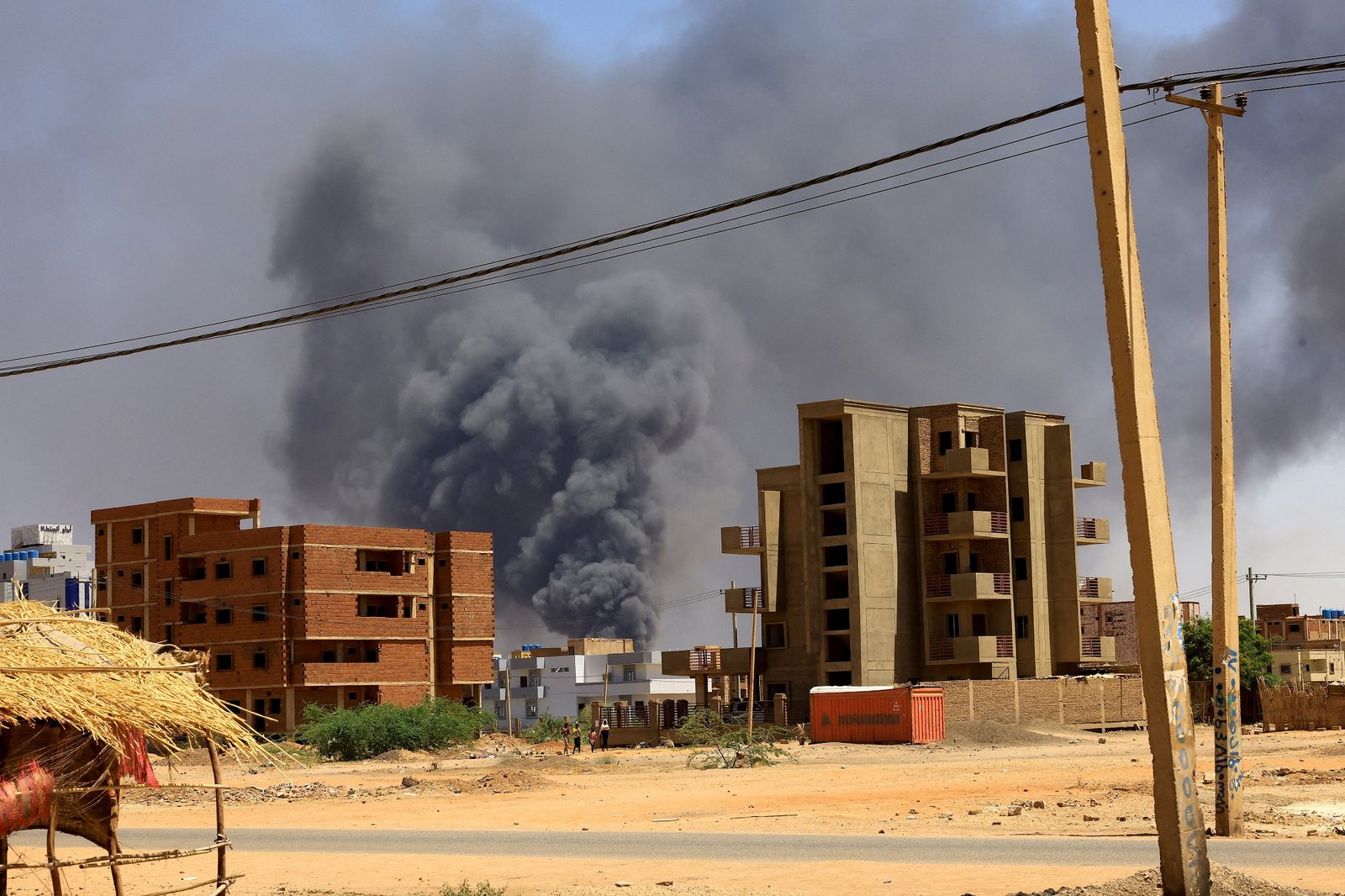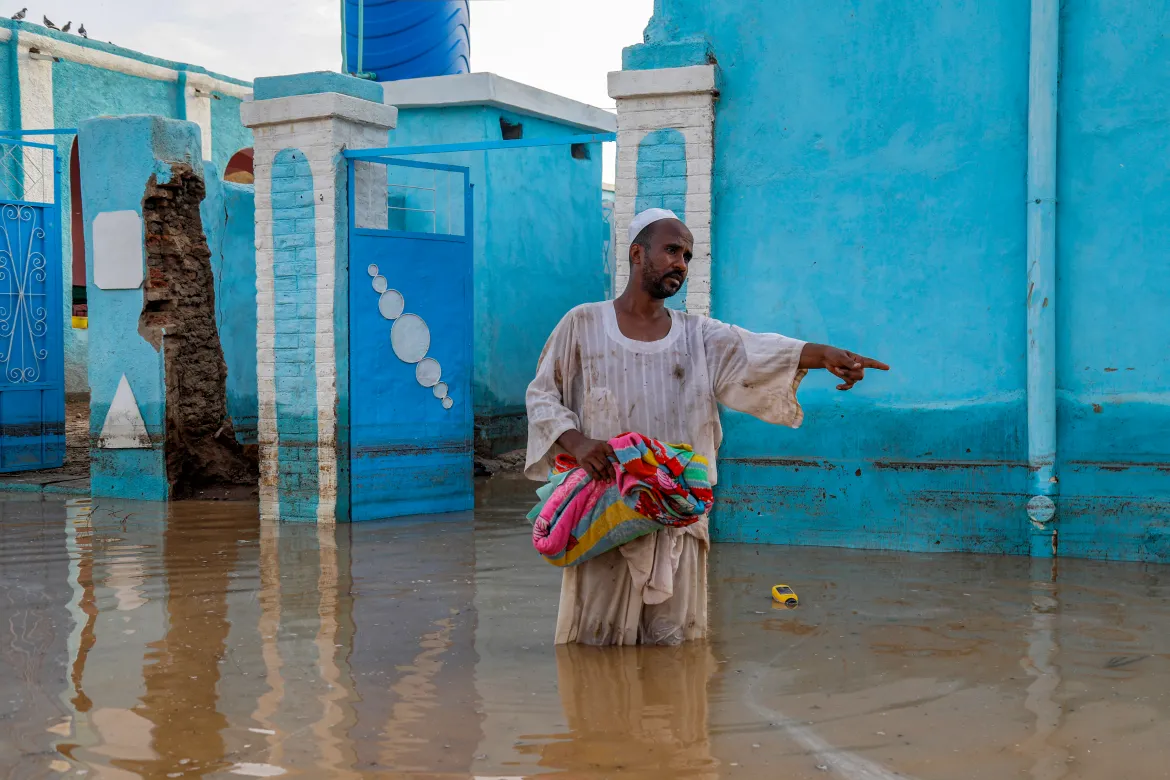Infrastructure in Sudan: Caught Between Rain and the Fires of War

Sudanhorizon – Nazik Shamam
The infrastructure in Sudan suffers from the ravages of the war that has been raging in the country for more than a year, especially those located in unsafe states, most notably Khartoum, Al-Jazeera, and Darfur states. Public and private buildings, roads, bridges, and service buildings remain under the fire of mutual shelling between the Sudanese army forces and the rebel Rapid Support Militia. However, war does not seem to be the only danger threatening the facilities, as thousands of homes and public buildings have been destroyed and roads have been cut off due to bad weather conditions, rain, and torrential floods that have swept through several Sudanese states, most notably the states of the River Nile, the Northern State and the Red Sea State.
According to unofficial estimates, the losses from the destruction of infrastructure and public facilities since the beginning of the war in Sudan range between 120 and 150 billion dollars so far.

Floods and torrents have severely damaged the infrastructure in the states, and according to a statement issued by the United Nations, the floods destroyed about (14) thousand homes and affected about (73) thousand people, most of them from the states of South Darfur and the Red Sea. The government meteorological authority is still warning of rain accompanied by floods in ten Sudanese states throughout this week.
The floods destroyed about (14) thousand homes and displaced 21 thousand people. The United Nations said in an update today, (Thursday), on the humanitarian situation resulting from the floods, that (11) Sudanese states were affected by the floods, and (21,370) people were displaced due to the floods.
The floods, torrents, and rains included the states of the Red Sea, the North, South Darfur, North Darfur, West Darfur, Kassala, Al-Qadarif, the White Nile, and Al-Jazeera.
With the humanitarian situation deteriorating due to the war, and the displacement of at least eight million people within the country, the floods have doubled the suffering of the Sudanese this year in light of the economic crisis, lack of money, and fuel scarcity.
In the River Nile State in Abu Hamad locality, water flooded homes, and residents lost (11.5) thousand homes according to government statistics. Last Tuesday, seven people died due to the collapse of residential buildings.

The floods and rains also extended to the Red Sea regions, and valleys were seen filled with water and flooding some roads linking the cities of Haya and Atbara. Warnings are increasing sharply this week of floods that are unprecedented in the country’s history.
The Sudanese Mineral Resources Company has formed an emergency committee to provide relief to those affected by the floods and torrents.
The company expressed its readiness to harness all its capabilities with mechanisms and efforts to ward off the effects resulting from the torrential floods by opening the drains, and the shield around the market was raised.
The General Manager of the Sudanese Mineral Resources Company, Mohamed Taher Omar, confirmed the stability of the situation in the mining areas after the floods and torrents and said in his interview with the Sudanhorizon news website that the warnings issued by the company earlier are a natural thing in such circumstances.
He revealed that they are heading to the River Nile State to stand on the situation in the field and monitor the losses, noting that the company, within the framework of social responsibility, will work to support those affected.
Yesterday, the Sudanese Mineral Resources Company warned miners and workers in the mining markets in the states of Kassala and the Red Sea, and asked them to take the highest levels of caution and stay away from valleys,
In addition to working on placing gears around waste basins, gold-bearing solutions, and processing basins to prevent them from being swept away in the event of torrents or sharp surface runoff, and appealed in a statement to drivers to drive vehicles with caution on the highways, and companies to be prepared to ward off the expected risks resulting from rains and torrents.
In turn, the activist in the River Nile State, Mujahid Othman, revealed that two roads in the state were cut off due to floods in the areas of Qabati and Atbara near Haya, which led to the cessation of movement. He explained in his interview with the Sudanhorizon website that the floods hit Abu Hamad and the mining areas and left catastrophic conditions, including the mixing of sedimentation basins mixed with cyanide and mercury. He confirmed that heavy rains fell today, Thursday, in Shendi, amid expectations of floods in the valleys.
Shortlink: https://sudanhorizon.com/?p=817

